Rotation - using logic
Determining new coordinates using logic
You can determine the new coordinates of an object using:
Rotation & the "L" shape
It works by joining the origin with the point to be rotated with an "L" shape.
Example 1
Rotate the following object clockwise 90° from the centre (1,3).

Join the origin to A with an L.
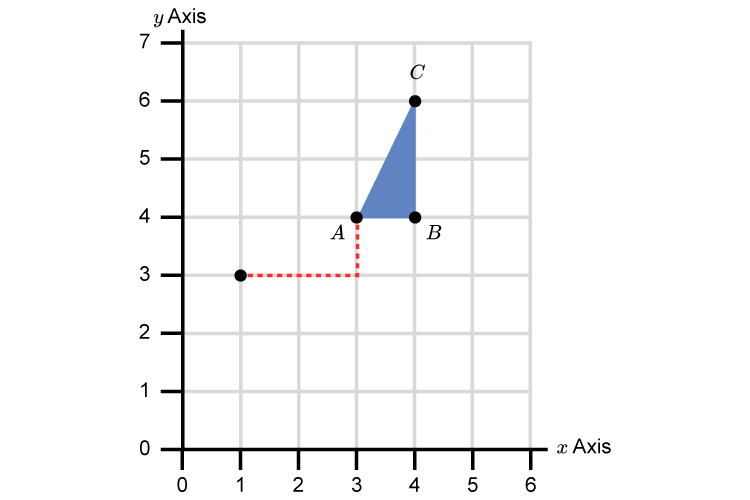
Now we are only dealing with right angles which makes this very easy when we want to turn a point through 90° clockwise.
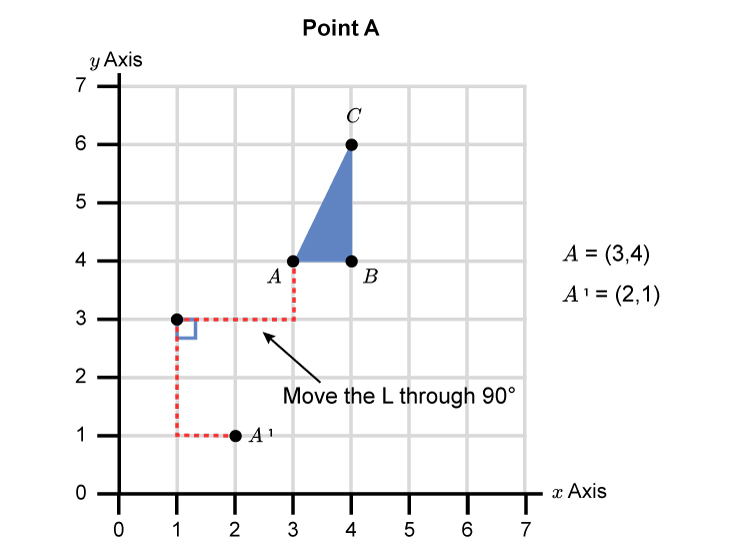


This gives a final graph as:
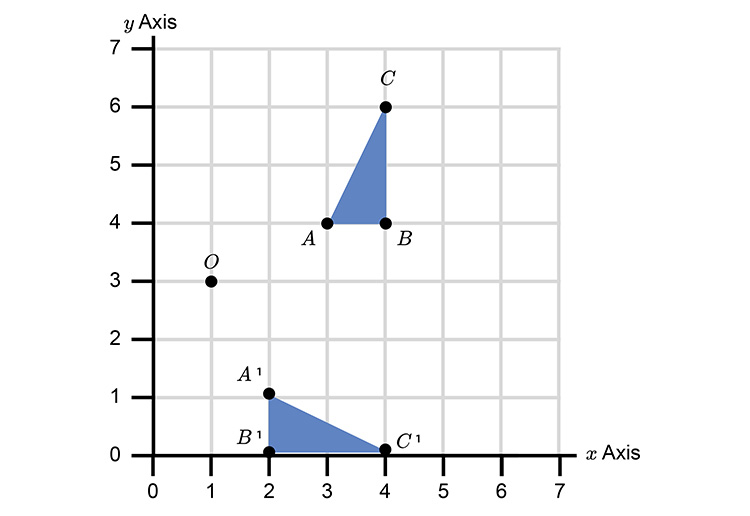
`A, B, C` has been rotated clockwise 90° from centre (1,3) to give the new triangle `A^1, B^1, C^1`.
Example 2
Rotate the following triangle 180° about the origin (0,0).
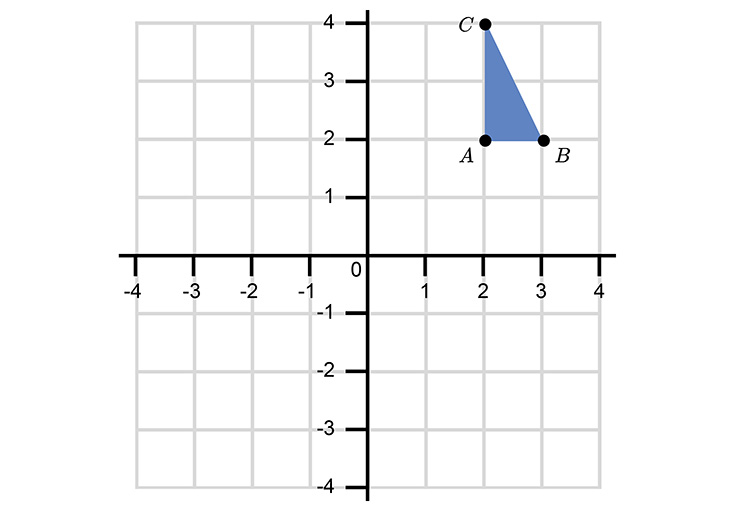
Rotate point `A` 180° using the L shape.
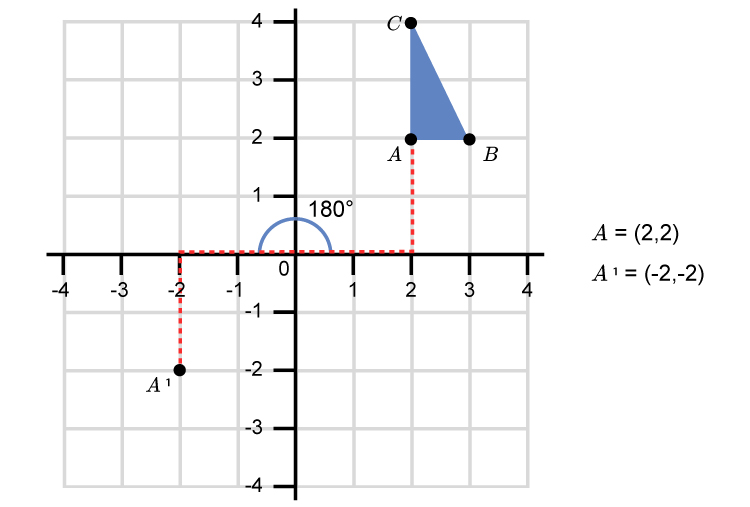
Rotate point `B` 180° using the L shape.
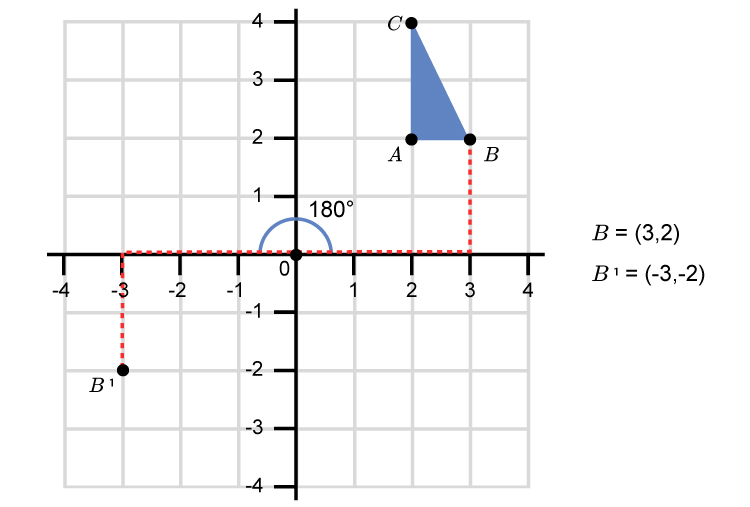
Rotate point `C` 180° using the L shape.
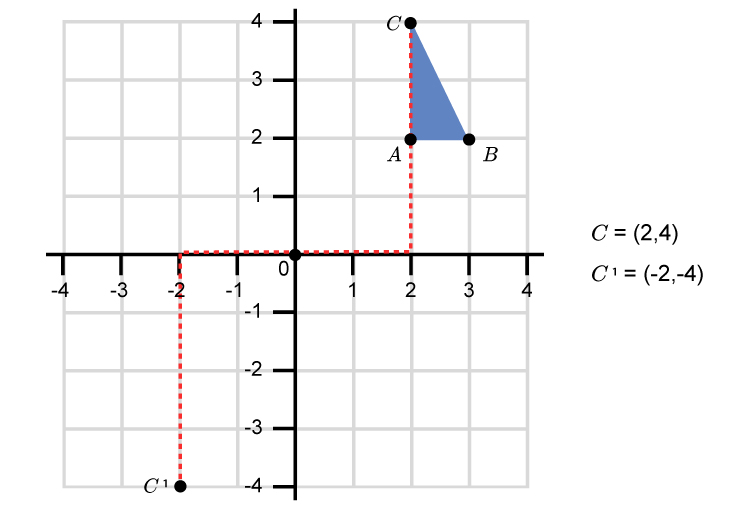
This gives a final graph as:
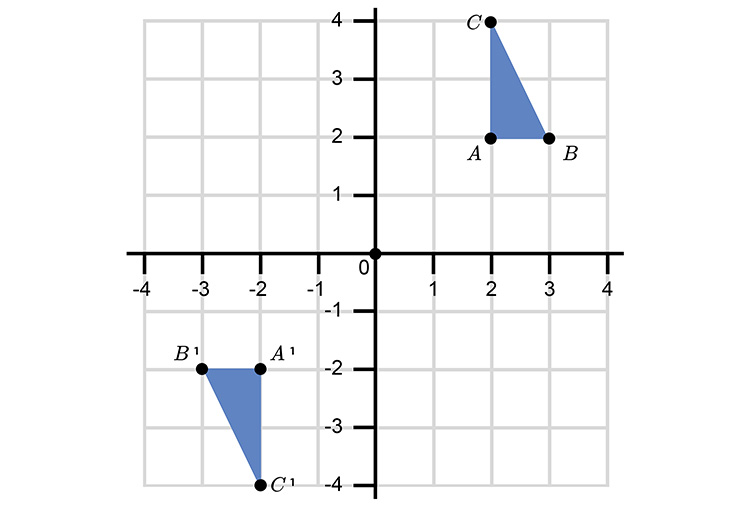
`A, B, C` has been rotated 180° from the centre (0,0) to give the new triangle `A^1, B^1, C^1`.
Example 3
Rotate the following shape 90° anticlockwise about grid point (1,1).

Rotate point `A` 90° using the L shape.
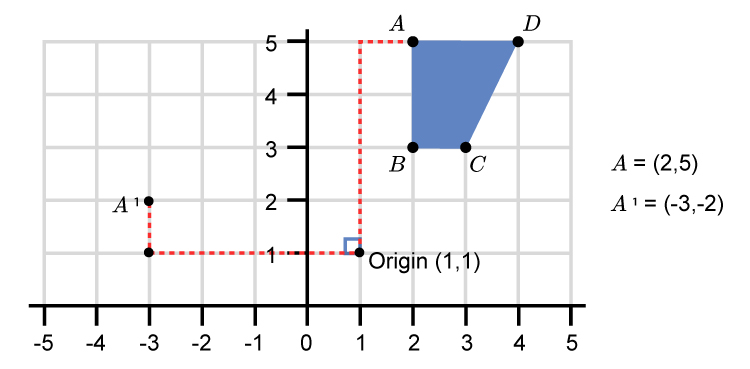
Rotate point `B` 90° using the L shape.

Rotate point `C` 90° using the L shape.
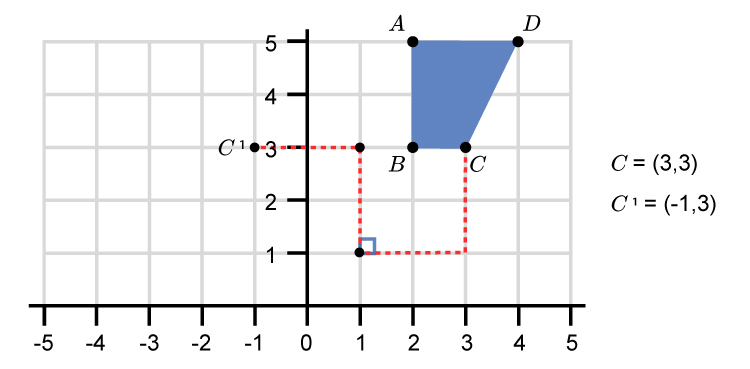
Rotate point `D` 90° using the L shape.
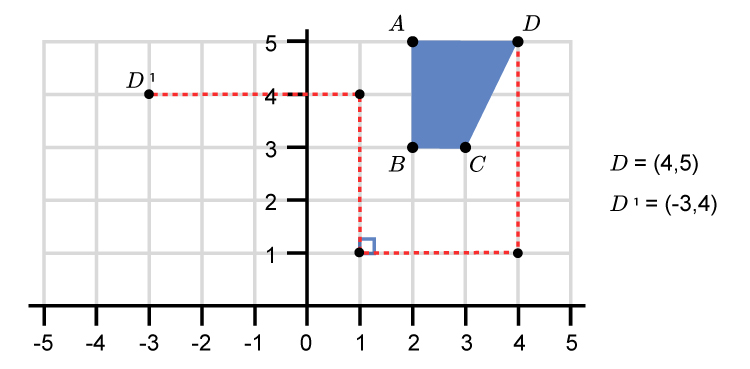
This gives a final graph as:

`A,B,C,D` has been rotated 90° anti clockwise about centre (1,1) to give `A^1,B^1,C^1,D^1`.




